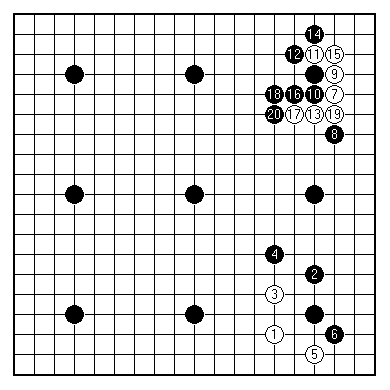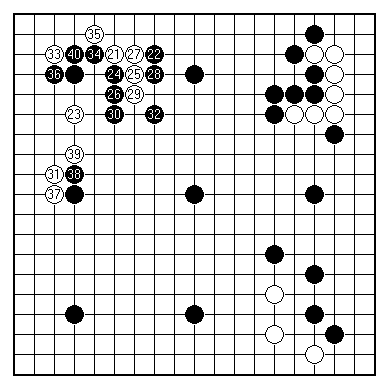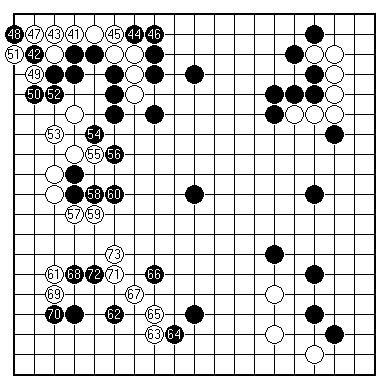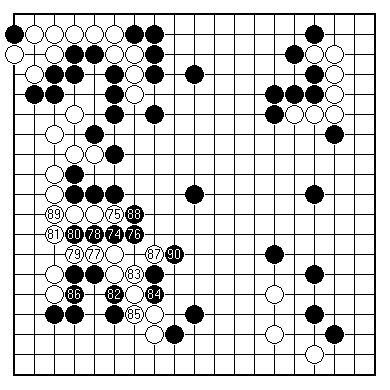
Hanging Out at Dan's
Charles Matthews 3-dan
introduces the game of Go
Don'ts
It is all very well being drawn into discussion of the
high-flown theoretical aspects of Go. Most games are
lost by mistakes, rather than won by brilliant play.
What beginners need most is to shed some bad habits, in
favour of ordinary good if not outstanding plays.
Many players believe they would benefit from
play-by-play analysis of their games by an expert. Most
dan players involved in teaching are however
chary of criticising every move they consider a mistake.
It can be much more helpful in practice to pick up
two or three points for improvement. Is anyone really
ready for the complete life-style makeover (give up
smoking, get a more fashionable haircut, throw out the
time-expired fridge contents, smile, dry-clean the
raincoat, get up half an hour earlier to meditate, make
a 12 month planting and pruning garden schedule...) by
this time next week?

Against my own natural habit, therefore, I'm going to
show you some quite destructive comment on the plays of
a 20 kyu player, taking Black in a nine-stone
game.
- 4 DON'T
- overestimate the centre.
The play at 5 is probably bigger in most circumstances.
- 8 DON'T
- ignore angle plays.
There is no good enough reason not to play 8 at 9.
- 10 DON'T
- allow hane at the head of two stones.
That's the shape inflicted on Black by White 11, and 13.
Black 10 should be at 11 to prevent this.
- 16 DON'T
- make empty triangles.
DON'T allow the opponent to connect without a challenge.
Black 16 is inefficient, and should be at 19 to cut.
This is a matter of self-respect as much as anything else.

- 27 DON'T
- blight your own stones.
White 27 has a bad effect on Black 22.
For consistency Black 26 should be at 27,
even if it means a loss in the corner (same as comment on 16).
- 32 DON'T
- make vague shapes.
White can give Black three cutting points round here.
- 34 DON'T
- allow your opponent easy connections along the edge.
Whatever comes next, Black should play at 40 to keep White separated.
- 38 DON'T
- play yourself into bad shape.
This would be better at 57 (same as comment on 10).

- 42 DON'T
- back down for no reason. This should be at 43.
- 48 DON'T
- leave silly cutting points.
This should be at 49, forcing White to live small.
- 54 DON'T
- play apparent forcing moves for the sake of it.
This should just be 56.
- 58 DON'T
- save non-cutting stones without strategic meaning.
Much better just to play 62,
even better to attack the White group lower right.

- 82,84 DON'T
- play forcing moves that run you out of liberties.
- 90 DON'T
- get so involved in local fights you lose perspective.
It is still the case that Black should give priority to an attack
in the lower right.
As we leave this game Black still retains some of the
initial advantage: on a rough count Black is perhaps 30
or 40 points ahead, thanks to the top side and central
area. However it has all been downhill since the start.
One would back White to make up the deficit from here;
and so it proved.
First published 7 July 2000 as On Your Side on MindZine,
Go Learning
© Charles Matthews 2000.
editor@gobase.org





